Green Deco Coptic
September 14th, 2012 | Link
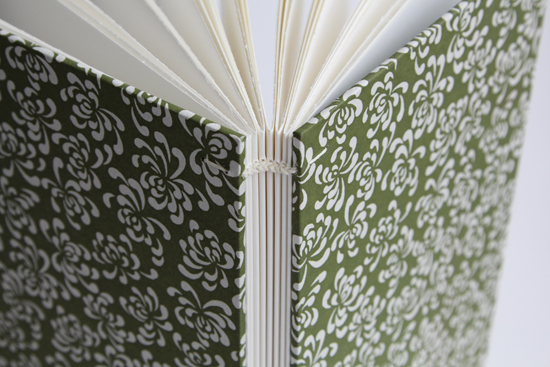
Two-needle Coptic binding; 9-5/8″ high by 6-7/8″ wide, with 128 pages in 8 sections. The pages are Mohawk Superfine 100lb text weight in smooth soft white. The cover paper is Japanese Chiyogami paper, which is a mixture of kozo and sulphite. This particular paper is Chiyogami 561 from The Paper Place.
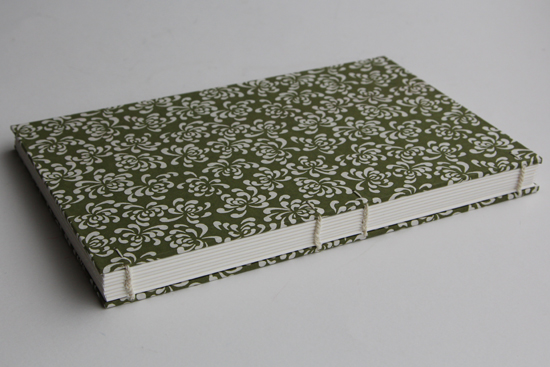
¶ Posted in
Paper | Tags:
bookbinding |
Comments Off on Green Deco Coptic
Gold Mountains Coptic
September 13th, 2012 | Link

Two-needle Coptic binding; 9-5/8″ high by 6-7/8″ wide, with 128 pages in 8 sections. The pages are Mohawk Superfine 100lb text weight in smooth soft white. The cover paper is Japanese Chiyogami paper, which is a mixture of kozo and sulphite. This particular paper is Chiyogami 288 from The Paper Place.
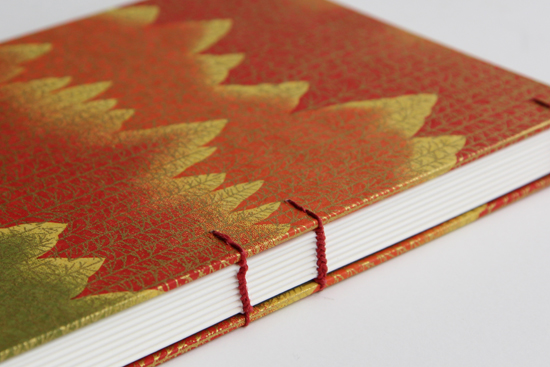
For this one, the paste-downs are a dark green Bugra from Hahnemühle, which I haven’t used before but I like very much — they hold up well against the PVA, with minimal curling or soaking through.
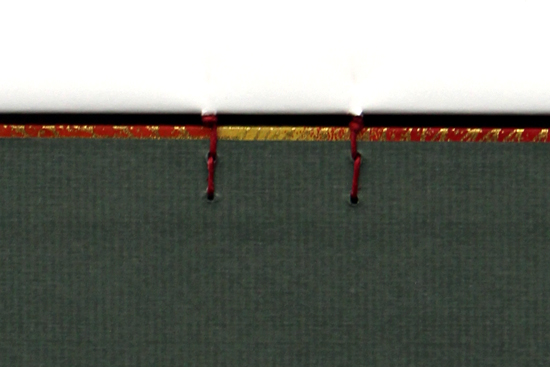
¶ Posted in
Paper | Tags:
bookbinding |
Comments Off on Gold Mountains Coptic
Gold Geometric Coptic
September 12th, 2012 | Link
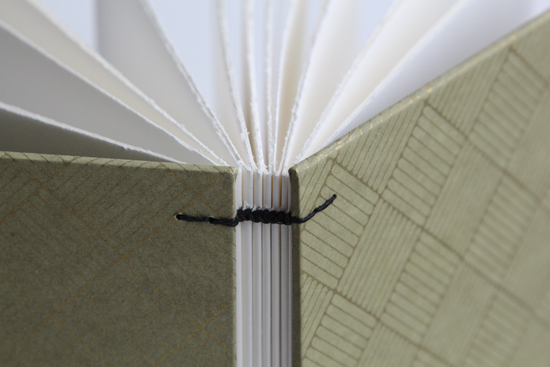
Two-needle Coptic binding; 9-5/8″ high by 6-7/8″ wide, with 128 pages in 8 sections. The pages are Mohawk Superfine 100lb text weight in smooth soft white. The cover paper is Japanese Chiyogami paper, which is a mixture of kozo and sulphite. This particular paper is Chiyogami 208 from The Paper Place.
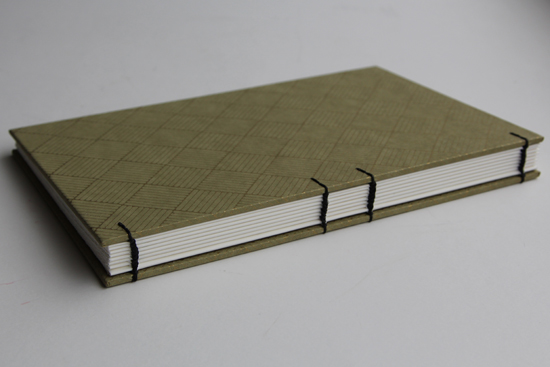
¶ Posted in
Paper | Tags:
bookbinding |
Comments Off on Gold Geometric Coptic
Thar Be Dragons Coptic
September 11th, 2012 | Link
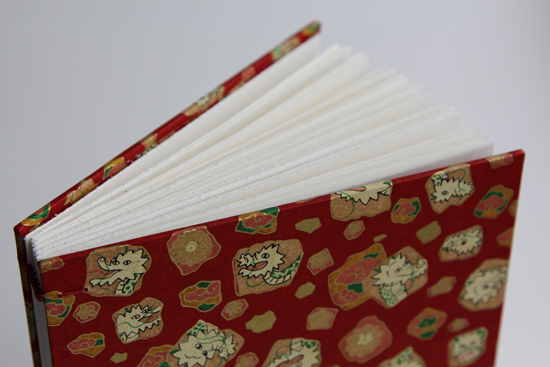
Two-needle Coptic binding; 9-5/8″ high by 6-7/8″ wide, with 128 pages in 8 sections. The pages are Mohawk Superfine 100lb text weight in smooth soft white. The cover paper is Japanese Chiyogami paper, which is a mixture of kozo and sulphite. I picked up this paper quite a while ago from Kozo Arts before they closed down — I haven’t seen it anywhere else.

¶ Posted in
Paper | Tags:
bookbinding |
Comments Off on Thar Be Dragons Coptic
Red Cherry Blossoms Coptic
September 10th, 2012 | Link
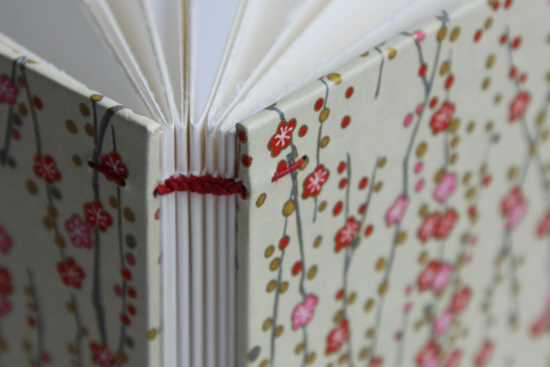
Two-needle Coptic binding; 9-5/8″ high by 6-7/8″ wide, with 128 pages in 8 sections. The pages are Mohawk Superfine 100lb text weight in smooth soft white. The cover paper is Japanese Chiyogami paper, which is a mixture of kozo and sulphite. This particular paper is Chiyogami 192 from The Paper Place.

¶ Posted in
Paper | Tags:
bookbinding |
Comments Off on Red Cherry Blossoms Coptic
Blue Mums Coptic
September 7th, 2012 | Link
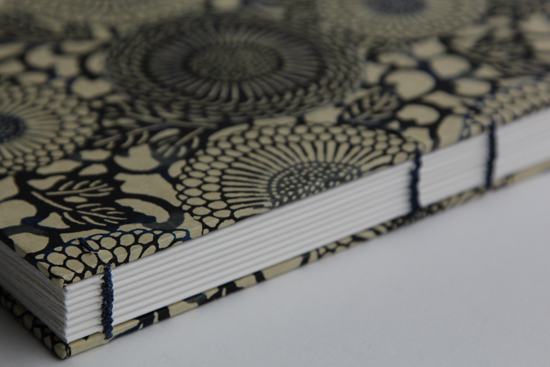
Two-needle Coptic binding; 9-5/8″ high by 6-7/8″ wide, with 128 pages in 8 sections. The pages are Mohawk Superfine 100lb text weight in smooth soft white. The cover paper is Japanese Chiyogami paper, which is a mixture of kozo and sulphite. This particular paper is Chiyogami 130 from The Paper Place.
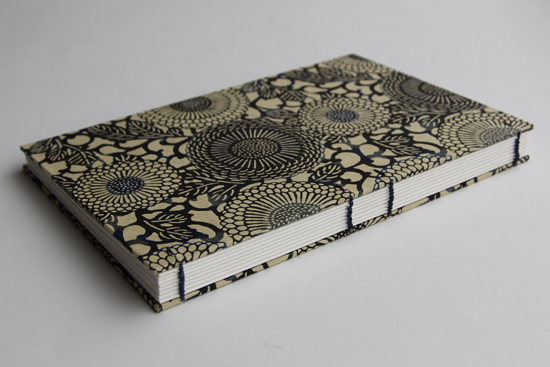
¶ Posted in
Paper | Tags:
bookbinding |
Comments Off on Blue Mums Coptic
Turquoise Grid Coptic
September 6th, 2012 | Link
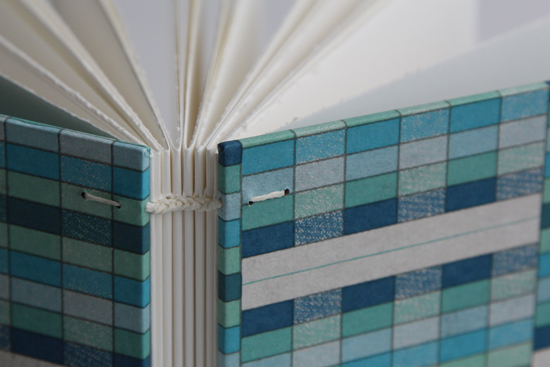
Two-needle Coptic binding; 9-5/8″ high by 6-7/8″ wide, with 128 pages in 8 sections. The pages are Mohawk Superfine 100lb text weight in smooth soft white. The cover paper is Japanese Chiyogami paper, which is a mixture of kozo and sulphite. This particular paper is Chiyogami 751 from The Paper Place.
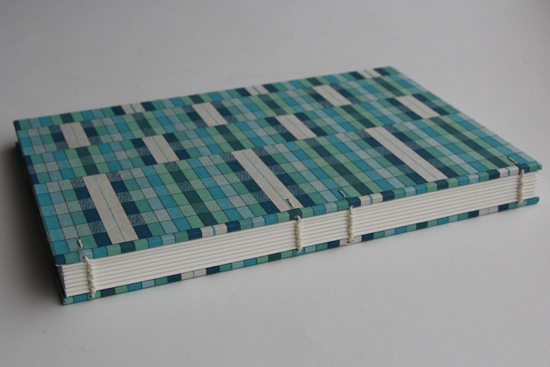
¶ Posted in
Paper | Tags:
bookbinding |
Comments Off on Turquoise Grid Coptic
Blue Floral Coptic
September 5th, 2012 | Link
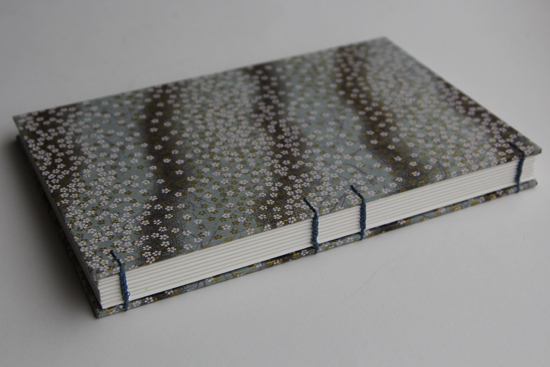
This is another paper I’ve used regularly over the years, a lovely muted blue-and-gray with tiny white blossoms scattered across it. It’s Chiyogami 439 from The Paper Place, and the books I’ve made with it are almost always among the first to be chosen when I sell them.
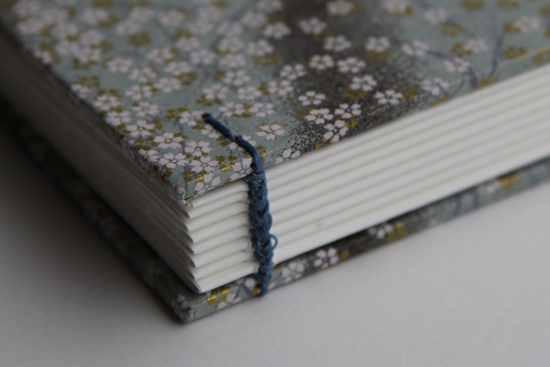
¶ Posted in
Paper | Tags:
bookbinding |
Comments Off on Blue Floral Coptic
Black Mountain Coptic
September 4th, 2012 | Link
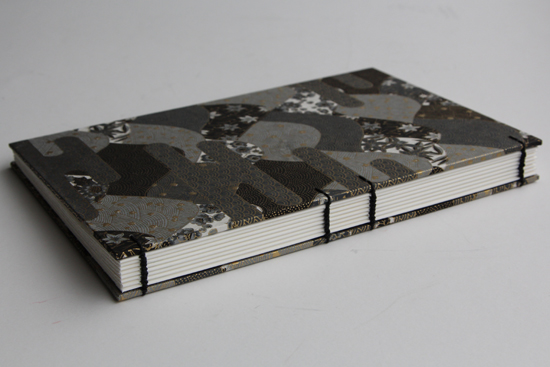
As mentioned before, this is one of my favourite papers, Chiyogami 30 from The Paper Place. I mentioned to a Japanese coworker of E’s that this is one of my “man-papers” as it has more masculine feel than most of the Chiyogami papers I regularly use. He laughed at me, and said that in Japan it wouldn’t be considered masculine at all. (Sorry, Grant!)
For most of the Coptics I used the same paper on the inside cover as the outside, but for this one I used Chiyogami 213, a swirly, filigree-ish gold-on-white paper that seemed complementary.

I switched back and forth between two different types of board attachments in this series of Coptics; what Keith Smith in Exposed Spine Sewings calls the “Type 3 Board Attachment”, which hinges through the board, and the “Type 2 Board Attachment,” which also has two holes in the cover but wraps around the spine instead of entering and existing through the side of the board. The main reason was that some of the thread I was using — like the black thread used on this book — was too thick to go through the side of the board without causing it to swell (or worse, tear).
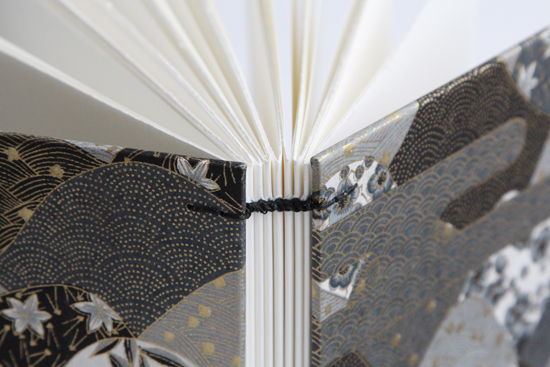
¶ Posted in
Paper | Tags:
bookbinding |
Comments Off on Black Mountain Coptic
Barnyard Coptic
September 3rd, 2012 | Link
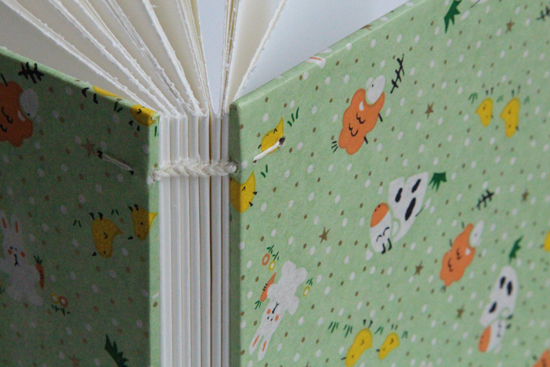
I hereby dub this month “Coptic Month” on bathtubdreamer, because we had very nice lighting the other morning and a new camera, so I needed something to take pictures of. And here we are.
The Coptic binding is one of the first bindings I learned, when I took a few classes through the extension program at the Alberta College of Art + Design. This type of binding dates back to as early as 200 AD in early Egypt (Wikipedia). It’s also known as a chain stitch binding, because of the appearance of the stitches on the spine.
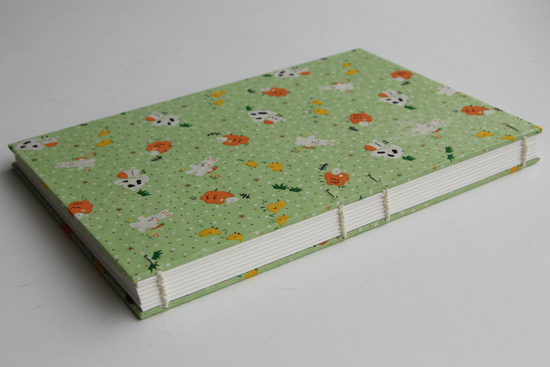
This particular version is called a two-needle Coptic, because it’s sewn with a needle on each end of the thread. There are actually two threads: one for the two left chains, and one for the two right chains. I prefer the two-needle version over the single-needle version because the single-needle version has sad looking not-quite-chains on the stitches closest to the edges. Both types (and many others) are described in the third volume of Keith Smith’s Non-Adhesive Binding series, Exposed Spine Sewings.
There are a number of ways to attach the boards to the sections; Keith Smith calls this the “Type 3 Board Attachment” and it’s the way I first learned to do it. Since the thread comes through the edge of the board, rather than wrapping around, it hinges better than other attachments that wrap around. But it requires thick bookboard (I used .098″ Davey board), and even then I managed to tear the board on one of the books. But not this one.
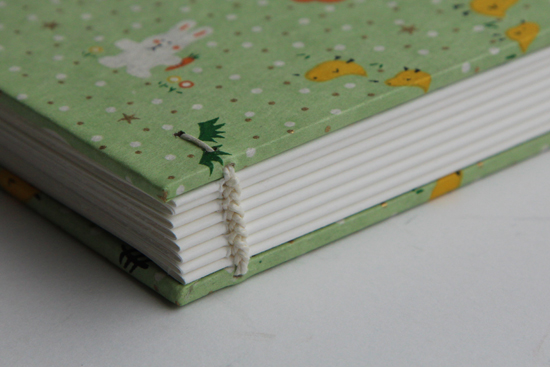
The finished book is 9-5/8″ high by 6-7/8″ wide, and there are 128 pages in 8 sections. The pages are Mohawk Superfine 100lb text weight in smooth soft white. The cover paper is Japanese Chiyogami paper, which is a mixture of kozo and sulphite. I buy most of my Chiyogami online from The Paper Place — this particular print is Chiyogami 280, and also comes in blue or red.
¶ Posted in
Paper | Tags:
bookbinding |
Comments Off on Barnyard Coptic



























